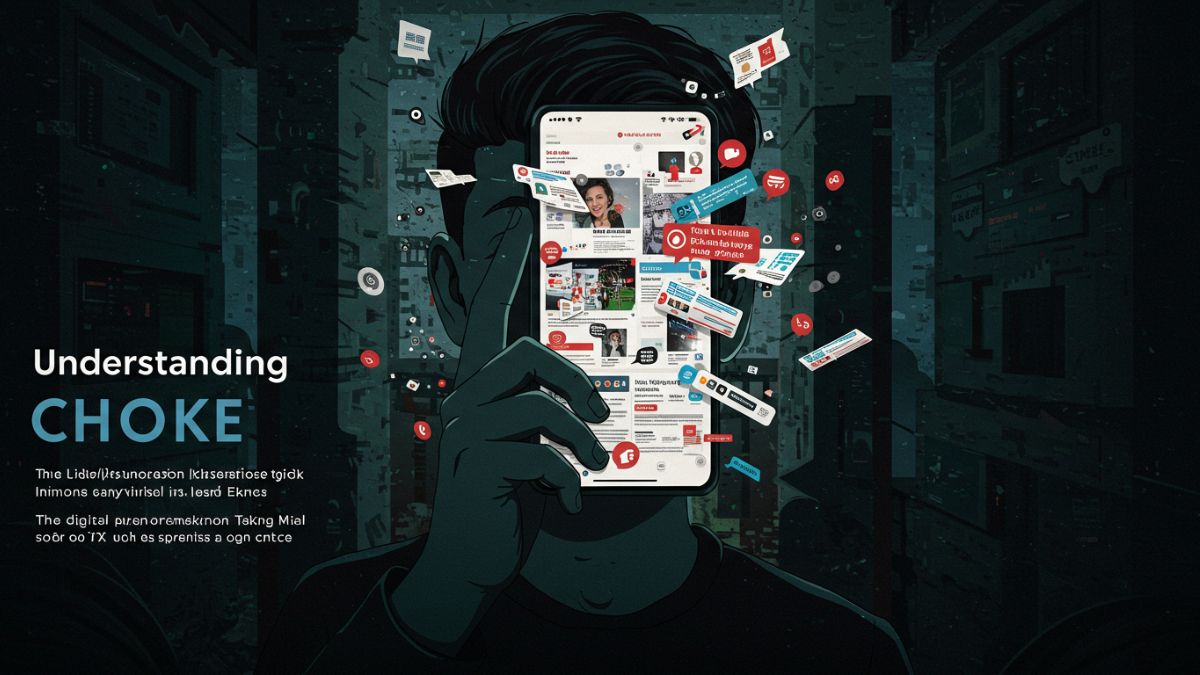In a world where screens dominate our daily lives, a curious phenomenon has emerged: internetchock. You may have felt it—a sudden overload of information that leaves you feeling dazed and disconnected. It’s not just about the amount of content available; it’s how we interact with it and the effects it has on our mental well-being.
As social media feeds scroll endlessly and notifications ping relentlessly, many find themselves caught in an overwhelming cycle. But what exactly is internetchock? And why should we care? This post dives deep into this digital phenomenon, exploring its impact on society, identifying key signs to watch for, and offering practical coping mechanisms. Ready to take control of your digital experience? Let’s unpack the complexities of internetchock together.
The Impact of Internetchock on Society
Internetchock is reshaping how we interact with technology and each other. As screens dominate our lives, people experience a strange disconnect despite being more connected than ever. This paradox can lead to feelings of isolation, even in crowded spaces.
Social media platforms often amplify this phenomenon. Users might scroll endlessly through curated feeds while neglecting real-world relationships. The pressure to stay updated can be overwhelming, causing anxiety for many.
Moreover, internetchock affects productivity at work and in personal life. Constant notifications interrupt focus and create a sense of urgency that’s hard to shake off.
In schools, students face challenges as attention spans shorten and distractions multiply. Learning becomes secondary when the allure of instant gratification pulls them away from important tasks.
This digital whirlwind leaves us questioning what it means to truly connect or engage with the world around us.
Signs and Symptoms of Internetchock
Internetchock manifests in various ways, often sneaking into your daily life without notice. One common sign is a constant feeling of anxiety when disconnected from the internet. You might check your devices obsessively, fearing you’re missing out on something important.
Another symptom can be difficulty concentrating. The barrage of notifications and endless scrolling can fragment your attention span, making it hard to focus on simple tasks like reading or working.
You may also experience social withdrawal. Instead of engaging with friends face-to-face, you find yourself preferring online interactions that feel more comfortable yet isolating.
Physical symptoms aren’t uncommon either. Headaches and eye strain are frequent complaints as screen time escalates beyond reasonable limits. If these signs resonate with you, taking a step back could be essential for your mental well-being!
Coping Mechanisms for Dealing with Internetchock
Dealing with internetchock can be challenging, but there are effective coping mechanisms to help navigate this phenomenon. One powerful method is setting boundaries around screen time. Designate specific hours for online activities and stick to them.
Practicing mindfulness is another valuable tool. Take breaks throughout your day to disconnect and engage in deep breathing or meditation. This helps center your thoughts and reduces anxiety.
Engaging in physical activity also plays a crucial role. A short walk or exercise session can significantly improve mental clarity and emotional well-being.
Join conversations offline too; connecting with friends or family face-to-face fosters genuine human interaction, countering the overwhelming digital world.
Consider journaling about your experiences with internetchock. Writing down feelings can provide insights into triggers and patterns that you may want to adjust moving forward.
How to Prevent and Reduce Internetchock in Your Life
To prevent and reduce internetchock, begin by setting boundaries. Designate specific times for using your devices. Try to stick to these limits. This can help you regain control over your digital consumption.
Engage in offline activities that spark joy or creativity. Read a book, go for a walk, or try a new hobby. These alternatives provide mental breaks from screens.
Mindfulness practices can also be beneficial. Simple breathing exercises or meditation can ground you during overwhelming moments online.
Consider detox periods where you disconnect completely from the internet for a few hours or even days. Use this time to reconnect with yourself and those around you.
Curate your online space thoughtfully. Unfollow accounts that don’t add value to your life and seek out positive content instead. This small shift can make a significant impact on how you interact with the digital world.
Conclusion:
The digital landscape is ever-evolving, and internetchock has emerged as a significant phenomenon that affects many of us. This overwhelming state can lead to various challenges in our daily lives, impacting productivity and mental well-being. Recognizing the signs and symptoms helps individuals understand their relationship with technology better.
Implementing coping mechanisms can make a real difference. Simple strategies like setting boundaries on screen time or engaging in offline activities can help mitigate the effects of internetchock. Prevention is always better than cure; fostering healthy habits around technology usage paves the way for a more balanced lifestyle.

